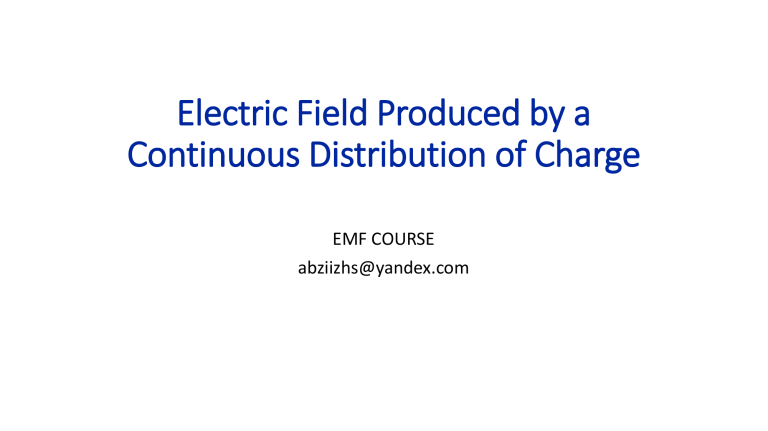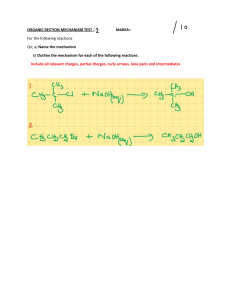
Electric Field Produced by a Continuous Distribution of Charge EMF COURSE abziizhs@yandex.com Continuous Charge Distribution • In continuous charge distribution, the charge is uniformly distributed over the conductor. In continuous charge distribution, individually charged particles bound to each other are separated by regions containing no charge. When the charge is continuously flowing over a surface or volume, that distribution is called the surface continuous charge distribution. • In other words, in continuous charge distribution, all charges are tightly bound and have less space between them. Types of Continuous Charge Distribution • There are three types of continuous charge distribution which are as follows: • Linear Charge: linear charge density • Surface Charge: surface charge density • Volume charge: volume charge density Linear Charge: linear charge density • Example. • If the line charge density is given by ρl = 24y 2 (mC/m), find the total charge distributed on the y-axis from y = −5 to y = 5. Surface Charge: surface charge density • Example. Soln. use calculus Volume charge: volume charge density • Example • Find The Total Charge Contained In A Cylindrical Volume Defined By p≤2 And 0 ≤ Z ≤ 3 If Pv = 20pz (mC/ m3). Electric Fields due to Continuous Charge Distributions • Electric Field: It is defined as the force experienced per unit positive charge placed in the field. Electric field intensity (E) measures the strength and direction of the electric field produced by charges. Electric Field Due to Line Charge • Finite Line of Charge: For a finite line charge segment of length L, the electric field at a point P located at a distance r from the line charge is given by: Example 1 Solution • Uniform line charges of 120 nC/m lie along the x axes (3,0,0) find the Electric Filed Intensity at P(-3,2,-1)m. Electric Field Due to Surface Charge • For an infinite plane of charge with a uniform surface charge density, σ, the electric field at a point P located at a distance r from the plane is given by: Exercise



